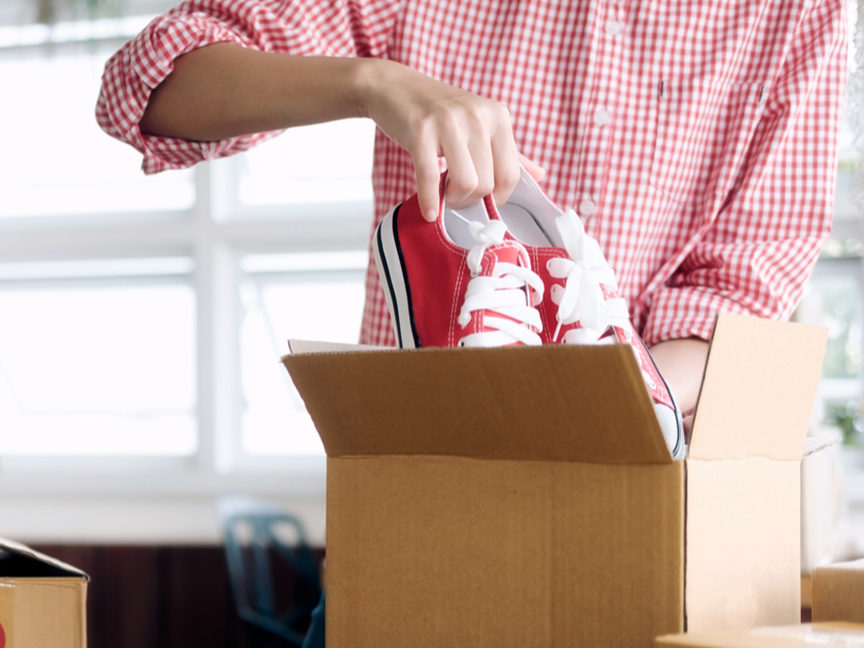
In the wake of the e-commerce explosion, triggered by the pandemic and growing concerns around supply chain sustainability, pickup and drop-off (PUDO) networks are projected to grow significantly in the coming years. In fact, PUDO has become the fastest-growing segment of out-of-home deliveries.
PUDO networks have matured rapidly in other areas of the world. A company in Denmark, which has a population of approximately 5.8 million people, is on pace to have 10,000 delivery lockers within the next two years. In a recent interview with Retail Brew, Allan Kaczmarek, founder of Denmark-based Swipbox, said a locker station will soon be about 300 meters from a person’s home on average. Similar growth is happening in other parts of Europe, Asia and Australia.
Five primary drivers of PUDO adoption are supporting this trend globally:
Customer convenience. When it comes to the widespread adoption of PUDO networks, convenience is key for both retailers and consumers. Shoppers can control their schedules by using third-party locations for product deliveries (pickup lockers) and returns (drop-off kiosks), instead of racing to a parcel carriers’ store or waiting for carrier pickup or delivery. PUDO also supports retailers by giving their customers more options for pickup or delivery. This will become critically important during peak retail periods, when customer experiences are more likely to be impacted by carrier delays.
PUDO also offers a more secure way to receive deliveries, by eliminating the risk of package theft. It also reduces consumer frustration and the burden of resending products, which doubles both retailers’ costs and the environmental impact of delivery.
Sustainability. Today’s consumers are more eco-conscious than ever before, and sustainable shopping has become an important priority for many. Yet the value of PUDO networks to sustainable commerce is an area that many U.S. shoppers aren’t fully aware of. Much of this awareness will arise organically as PUDO host providers become increasingly prevalent, but incentives will also play a key role in education and adoption.
It will be interesting to see how increased consumer awareness around returns processes impacts PUDO adoption. Many consumers don’t realize that returns are handled in a variety of ways, including return-to-stock, liquidation and recycling. But these methods only account for a fraction of returned goods. Up to 6 billion pounds of products are sent to landfills for final disposition. Yet a recent survey by Inmar revealed that 76% of respondents said they would be more inclined to shop with retailers that have more sustainable returns practices.
With more knowledge of this downstream activity, many consumers will likely alter their behavior and focus on returning fewer items, or choose to maintain purchase habits and opt for more sustainable return options such as PUDO locations.
Costs. Few factors are as impactful on consumer behavior as cost. With inflation continuing to decrease the buying power of consumers, they are particularly keen to squeeze more out of every dollar. PUDO networks prevent the need for separate trips to return e-commerce purchases, making it easy to work into their normal routine at a retailer, such as a supermarket, drugstore or dollar store. This will save time and money for consumers, and may help circumvent additional fees like surcharges for fuel and labor.
Retailer differentiation. While navigating inflation, supply chain challenges and a host of other issues, many retailers are looking for new ways to differentiate their brands. The addition of PUDO capabilities helps a retailer become a multi-destination point, providing greater convenience and earning incremental revenue, all while boosting shopper loyalty. Savvy retailers will embrace PUDO networks as an economical approach to new customer acquisition, as well as increasing value for even their most loyal customers.
Additionally, host retailers will differentiate their banners in a crowded marketplace by providing a closer link between the online experience and the physical store. This will increase the number of store visits, reduce customer acquisition costs, and provide new promotional opportunities, all while supporting their sustainability initiatives.
Reducing final-mile delivery logistics. The most obvious driver of PUDO adoption is the impact on final mile delivery. PUDO networks will increase deliverability rates and reduce the logistical stress for carriers, as they’re significantly more efficient than home deliveries. A PUDO location can receive hundreds of parcels at a time, reducing the extra travel required for home deliveries and saving fuel and labor, and reducing their overall carbon footprint.
\Even with all the benefits of widening PUDO adoption in this new age of e-commerce, there are challenges to be expected in implementation. The key to sustaining PUDO networks is simplicity. The network will inevitably include a number of carriers, each with its own rules and data sets. Operators must therefore ensure that they select a PUDO provider that can manage all carrier data and integrations. Another key challenge lies in change management. Behavioral challenges are inevitable, but these can be overcome through proactive education and increased familiarity with the benefits. Once consumers, retailers and carriers experience success, adoption will be accelerated.
The growth of PUDO networks will offer immense opportunities for brands, retailers, carriers and consumers. As awareness increases, the ecosystem will rapidly evolve and provide greater cost savings and increased productivity. Online retailers will also be able to improve the customer experience while increasing loyalty, profitability and sustainability.
Additional value will be realized by companies embracing an integrated, end-to-end solution for PUDO networks that streamlines operations and uncovers new insights buried in disparate data sets. Companies mining this harmonized data will learn how to reduce returns, increase value recovery and generate new incentives to drive desired behaviors. These companies, and their shoppers, will embrace sustainable practices that drive the three Ps in the triple bottom-line: people, profit, and planet.
Dan Nevin is general manager of post-purchase solutions at Inmar Intelligence.







